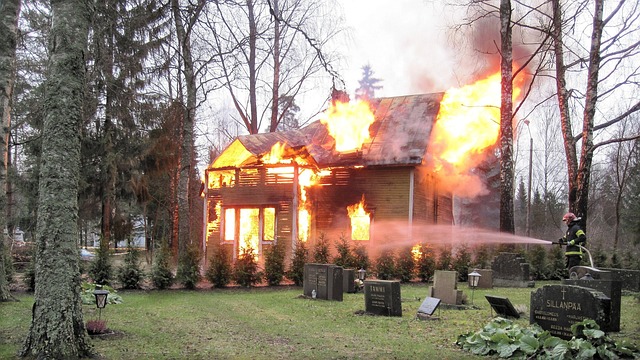House flipping in California involves buying undervalued properties like fire-damaged homes, renovating them, and reselling for profit. Beginners should understand the process, assess structural issues, learn about construction, budgeting, and market dynamics. Researching costs, zoning laws, and networking with professionals is vital. Despite high competition and strict regulations, California's housing market offers significant investment potential. Selling a fire-damaged house requires thorough assessment, swift action, strategic marketing, and adherence to local rules regarding hazardous materials removal and real estate transactions. Financial considerations include cash flow management, tax implications, insurance, and risk mitigation.
“Discover the thrilling world of house flipping with our comprehensive guide, tailored for aspiring specialists. From understanding the basics of this lucrative yet challenging industry to navigating California’s unique market, we equip beginners with essential knowledge. Learn about fire damage assessments, a critical skill in identifying potential and costs when buying and selling quickly. Explore legal and financial considerations specific to California flippers. This article is your one-stop resource for thriving in the California real estate market by successfully selling fire-damaged houses.”
- Understanding House Flipping: A Short Course for Beginners
- The California Market: Opportunities and Challenges for Flippers
- Fire Damage Assessment: How to Identify Potential and Costs
- Strategies for Selling a Fire-Damaged Property Quickly
- Legal and Financial Considerations for Flippers in California
Understanding House Flipping: A Short Course for Beginners

House flipping is a real estate investment strategy that involves buying undervalued properties, renovating them, and then reselling at a higher price to make a profit. For beginners, it’s essential to understand the process and its potential risks and rewards. The first step in this journey is identifying the right property, such as a sell fire-damaged house in California, which can be a lucrative opportunity due to the potential for substantial renovation profits. These properties often come with unique challenges, requiring specialized knowledge and resources to assess and fix structural issues.
Learning about construction, budgeting, and local market dynamics is crucial. Beginners should research remodeling costs, understand zoning laws, and network with professionals like contractors, inspectors, and real estate agents who can provide guidance throughout the flipping process. Online courses and books dedicated to house flipping offer valuable insights into successful strategies, helping beginners navigate this exciting but demanding venture.
The California Market: Opportunities and Challenges for Flippers

The real estate market in California presents a unique landscape for house flippers, offering both lucrative opportunities and significant challenges. With a vast and diverse population, the state’s housing market is highly competitive, particularly in urban areas like Los Angeles and San Francisco. This competition drives up property values, providing flippers with potential for substantial returns on their investments. California’s climate and lifestyle appeal also attract buyers from all over, ensuring a consistent demand for well-renovated properties.
However, the market’s intensity poses challenges, especially when dealing with distressed properties, such as fire-damaged houses. These homes often require extensive repairs, increasing the financial risk for flippers. Regulatory requirements and strict building codes in California further complicate the renovation process, demanding compliance to maintain property value and avoid legal issues. Yet, those who successfully navigate these challenges can find rewarding opportunities, transforming distressed assets into desirable residences that cater to the state’s vibrant housing market.
Fire Damage Assessment: How to Identify Potential and Costs

When considering selling a fire-damaged house in California, a thorough assessment is crucial to understanding the scope of repairs and potential costs. The first step is to identify visible signs of fire damage, such as charred walls, melted insulation, or smoke stains. Even if a property has been cleaned post-fire, hidden damage could exist behind walls or under flooring.
Professional inspectors specialized in fire damage assessments use advanced techniques, including moisture meters and thermal imaging cameras, to uncover potential issues. These tools help identify water damage from firefighting efforts, which can lead to mold growth if not properly addressed. Moreover, assessing the structural integrity of the building is vital; weakened beams or columns could require extensive repairs or even replacement, significantly impacting the overall cost of restoration.
Strategies for Selling a Fire-Damaged Property Quickly

When it comes to selling a fire-damaged property in California, speed is crucial. House flipping specialists understand that time is money, and quick sales can maximize profits. The first step is to conduct an efficient damage assessment. With California’s strict regulations regarding structural integrity, it’s essential to accurately document the repairs needed and their estimated costs. This process helps set realistic expectations for potential buyers and facilitates a smoother transaction.
Marketing strategies should be aggressive yet targeted. Given the unique nature of fire-damaged properties, specialists often employ avant-garde marketing techniques. From captivating drone footage showcasing the property’s potential to immersive virtual tours, these tactics can attract buyers who appreciate the challenge of renovation. Additionally, specialists may offer creative financing options or partnerships with local contractors to make the sale more appealing and feasible for interested buyers.
Legal and Financial Considerations for Flippers in California

In California, house flippers face a unique set of legal and financial considerations. One significant challenge is navigating the process of selling fire-damaged properties. If a home has suffered extensive damage due to fire, flippers must adhere to strict regulations regarding hazardous materials removal, such as asbestos or lead paint, to ensure the safety of future occupants. Failure to comply can result in hefty fines and legal repercussions.
Additionally, California’s real estate market is highly regulated, with specific rules for disclosures, contracts, and pricing. Flippers must stay up-to-date on local laws and guidelines, especially when dealing with short sales or foreclosures. Financial considerations include understanding the tax implications of flipping, managing cash flow during renovations, and securing appropriate insurance to protect their investments from potential losses related to fire damage, legal disputes, or market fluctuations.
House flipping can be a lucrative venture, especially in dynamic markets like California. By understanding the process, navigating legal and financial considerations, and adopting effective strategies for selling fire-damaged properties, specialists can capitalize on opportunities while managing challenges. Remember that staying informed about market trends, such as those unique to California, is key to success in this competitive field, enabling quick sales of fire-damaged houses within the state.






